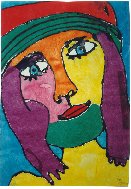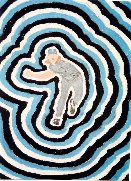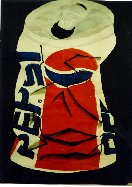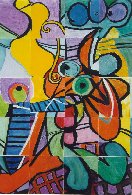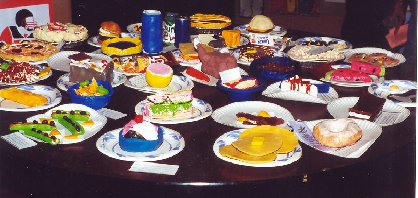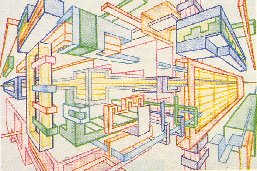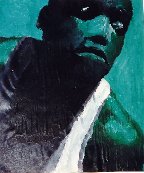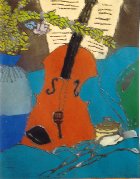| Assessment : | Acceptable Performance Level |
| Completed art projects. | 3.0-4.0 Average on completed work. |
| 2 pieces of artwork for the May Art Show. | 3.0-4.0 Average on report card (90-100 grade point average for two six week terms) |
| CONTENT SEQUENCE
(12 weeks year 1) |
PERFORMANCE INDICATORS
(INTERMEDIATE) |
METHOD OF ASSESSMENT
|
ACHIEVED PERFORMANCE LEVELS |
| 2 Point Perspective Drawing: Renaissance(line) | 1B, 1C, 2A, 3B, 4A | Rubric | 3-Proficient |
| Mona Lisa Recreation
da Vinci |
1A, 2A, 2C, 3B, 4B
|
Rubric | 3-Proficient |
| Monochromatic Portraits
Warhol (Color) |
1A, 1C, 2C, 3B, 4B | Rubric | 3-Proficient |
| Abstract Color Portrait Picasso | 1A, 1B, 1C, 2C, 3A, 3B, 4B | Rubric | 3-Proficient |
| Abstract Still Life Picasso/Braque | 1B, 1C, 2C, 3A, 3B, 4B | Rubric | 3 Proficient |
| Scratchboard Durer(Texture) | 1A, 1B, 1C, 2A, 2C, 3B, 4B | Rubric | 3-Proficient |
| Clay Food Oldenburg(Form)
|
1A, 1B, 1C, 2C, 3A, 3B, 4A | Rubric | 3-Proficient |
(12 weeks, year 2)
|
|||
| Thematic Collage | 1A, 1B, 1C, 2C, 3B, 4B | Rubric | 3-Proficient |
| Pop can painting Pop Art(Color) | 1A, 1B, 1C, 2C, 3B, 4B | Rubric | 3-Proficient |
| Figures in Motion OP Art (Line) | 1B, 1C, 3B, 4B | Rubric | 3-Proficient |
| Face Mugs (Form) | 1A, 1B, 1C, 2B, 2C, 3B, 4A | Rubric | 3-Proficient |
| Finish That Scene (Color) | 1A, 1B, 1C, 2A, 3B, 4B | Rubric | 3-Proficient |
| Computer Portraits | 1B, 1C, 2C, 2D, 3B, 4B | Rubric | 3-Proficient |
| Picasso Recreation | 1A, 1B, 1C, 1D, 2A, 3A, 3B, 4B | Rubric | 3-Proficient |
| Creating a Board Game | 1A, 1C, 1D, 2B, 2C, 2D, 3B, 4A | Rubric | 3-Proficient |
